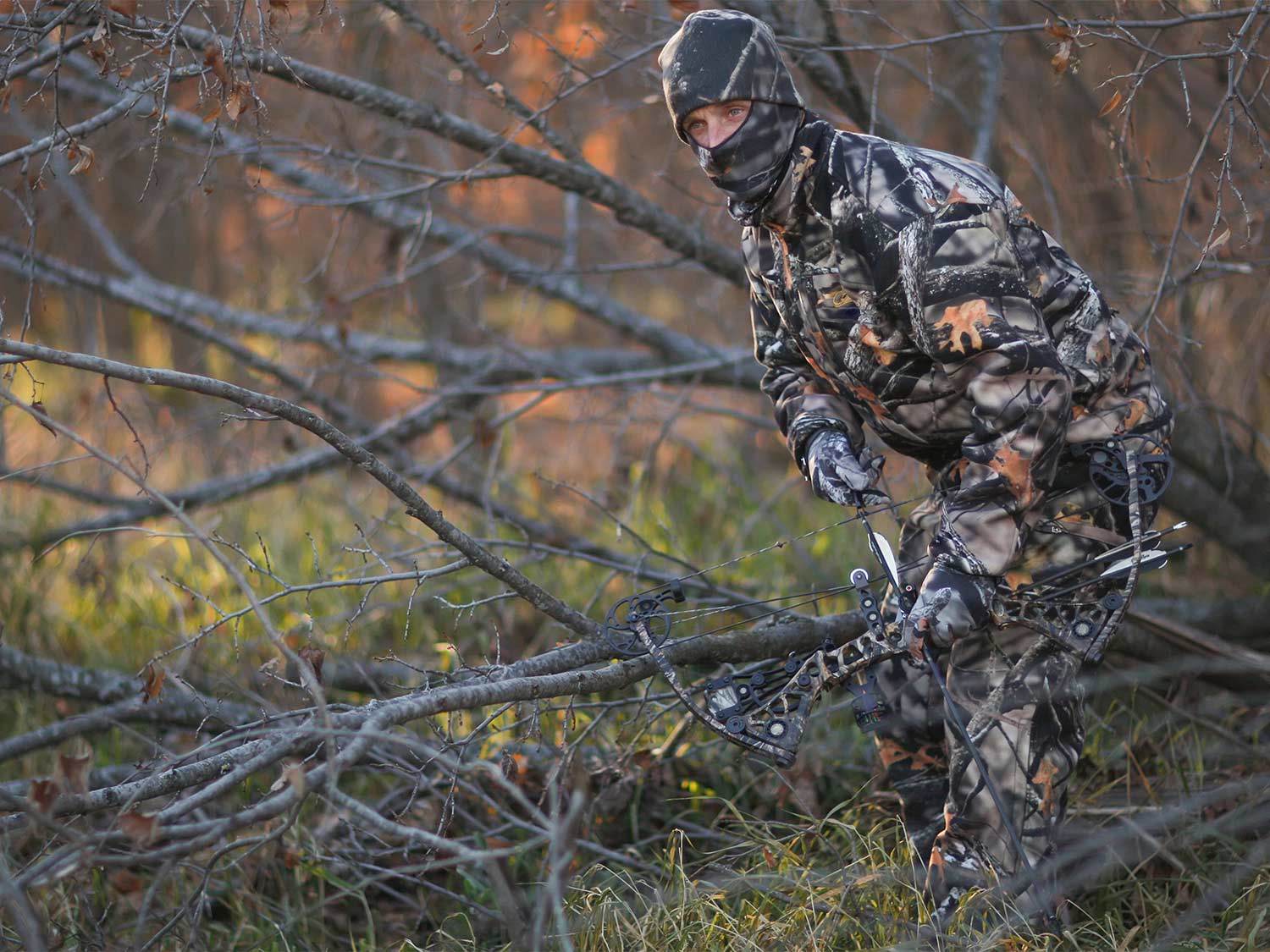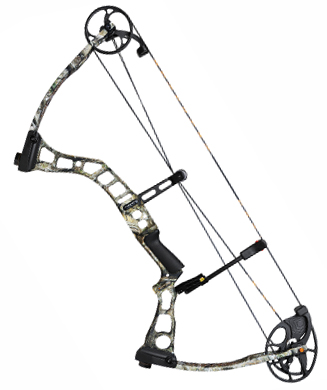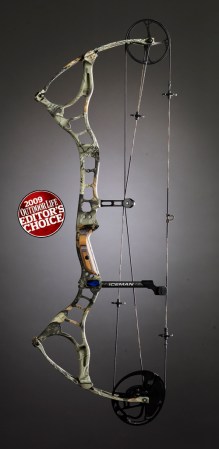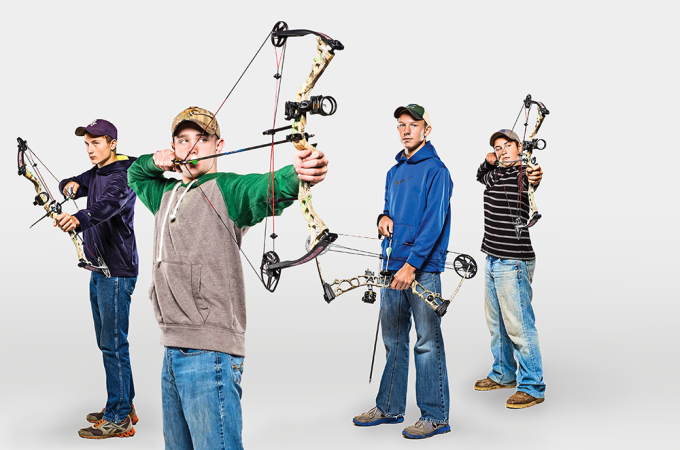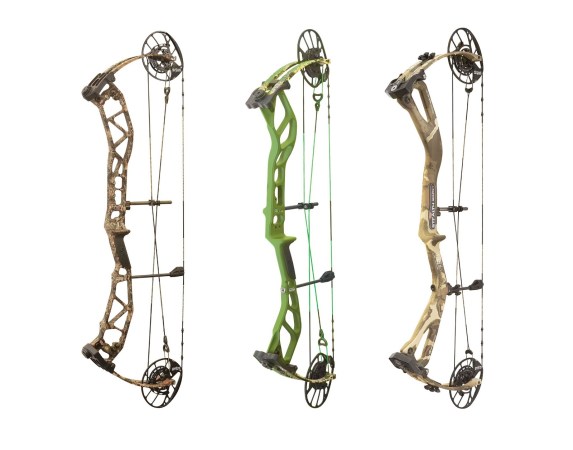We may earn revenue from the products available on this page and participate in affiliate programs. Learn More ›
A new season. Piles of new bowhunting gear. Many bowhunters can end up questioning whether sorting through it all is really worth the time and effort. And especially, when it comes to big-ticket compound bows. After all, they couldn’t possibly improve enough to warrant those bloated price tags, could they? Well, hold on there. If you’ve got a hankering to upgrade your current rig, here are 10 solid reasons a trip to your local archery pro shop this week might be some seriously smart shopping.
1. Custom Strings & Cables

Talk to custom, after-market string makers and they will tell you there is a world of difference in the quality between most high-performance custom strings and the stock, factory strings found on most compounds (even from the best brands). That news might come as a shock for someone who just plunked down $1,000 (or more) for a new bow, but as someone who has had a fair amount of exposure to custom strings, I can attest that most all of the touted custom string advantages are very real indeed. They include far less (virtually no) string stretch and far greater longevity—several years versus just one or two for a hard-hunted factory string. A set of premium custom strings/cables, made using premium and typically more-expensive proprietary materials, will typically set you back about $100 to $150, but you are also less likely to experience string stretch that can cause your bow to go out of tune, which manifests itself as a few common maladies: Poor cam timing, bothersome peep rotation, and even things like inconsistent brace height and bow poundage. In the end, a lesser-quality string can end up forcing you to constantly re-tune and re-sight your bow, because what suffers is the consistent, in-the-field accuracy you worked so hard to obtain. If you want to “bombproof” your favorite compound, adding a quality custom string is a good start, and there are several smart options from proven companies that include Vapor Trail
2. Riser ‘Cage’ Construction

I vividly recall examining the first “riser-cage” construction, in the riser of the Elite Energy 32 compound back in 2013. To be honest I didn’t really know just how a little open-air “cage” in a riser could help a bow shoot better, but I did like the results. I soon found Elite had built another rock-steady, impressively silent and accurate, virtually vibration-free bow. Was some or all of that helped along by the unique new riser technology? For the answer, simply look at the newest bow models from several respected companies. Not so coincidentally, much the same (or at least very similar) technology has since snowballed. For 2019, not only can you can find it in the riser of the new Elite Ritual 30 (www.elitearchery.com) , but also in models from a handful of very long-standing, top-tier bow companies. All have found the little “cages” in the riser help promote stability and balance, while improving stiffness and vibration-dampening. And all that leads to better hunting accuracy. Yes, the cage is all the rage.
3. Improved Cable/Limb Stops

Better shooting form. More accuracy. A more-consistent anchor. All are byproducts of having a nice solid back wall at full draw, and nothing will get you there like today’s next-gen limb and cable stops. Draw stops of some fashion have been around for years, but recently, like most everything else on bows, these little wonders have been refined and reimagined to the point of next-level efficiency. As stated, a nice and solid back wall helps you hold your form better, because that back wall is so consistent. You can lean into it so you don’t get creep or crawl, and today’s bows also give you some options. Prime Archery bows (www.g5prime.com) , for example, come with installed limb stops, and you also get optional cable stops, so you can really customize your bow’s let-off and back wall feel. In general, limb stops produce that rock solid wall feel, while cable stops are a bit softer feeling. And if your next compound offers both I recommend trying both to see what you prefer, because one will likely suit you more ideally.
4. Combo Comfort/Performance Cam Technology

How do you want your compound hunting bow to feel and perform? With an ultra-smooth-draw backed by speed that will get the job done, or an all-out speed burner with a slightly more-challenging draw cycle? How about both? Over the last few years a few bow companies have introduced innovations that allow you to tweak certain aspects of the same compound to achieve either a “comfort” or “performance” experience, including one from PSE (www.psearchery.com) that centers on moving a bow cable. But maybe no company has nailed this “Two-in-One” technology quite like Bowtech (bowtecharchery.com) , with its unique FlipDisc2 cam technology. This user-friendly system can be quickly adjusted without need for a bow press or even a professional bow technician. You simply remove a few screws from the cam-mounted discs and flip them. Just one way traveling bowhunters can make use of this combo system, is by starting the season in “Performance” mode out west, where you can benefit from the increased speeds and flatter arrow trajectories during the longer shots expected while chasing pronghorns, elk and mule deer. Then later, a switch to smoother-drawing “Comfort” mode might be beneficial during, say, the frigid November whitetail rut in the upper Midwest. However you slice it, options are good.
5. Modular Draw Length Cam Systems
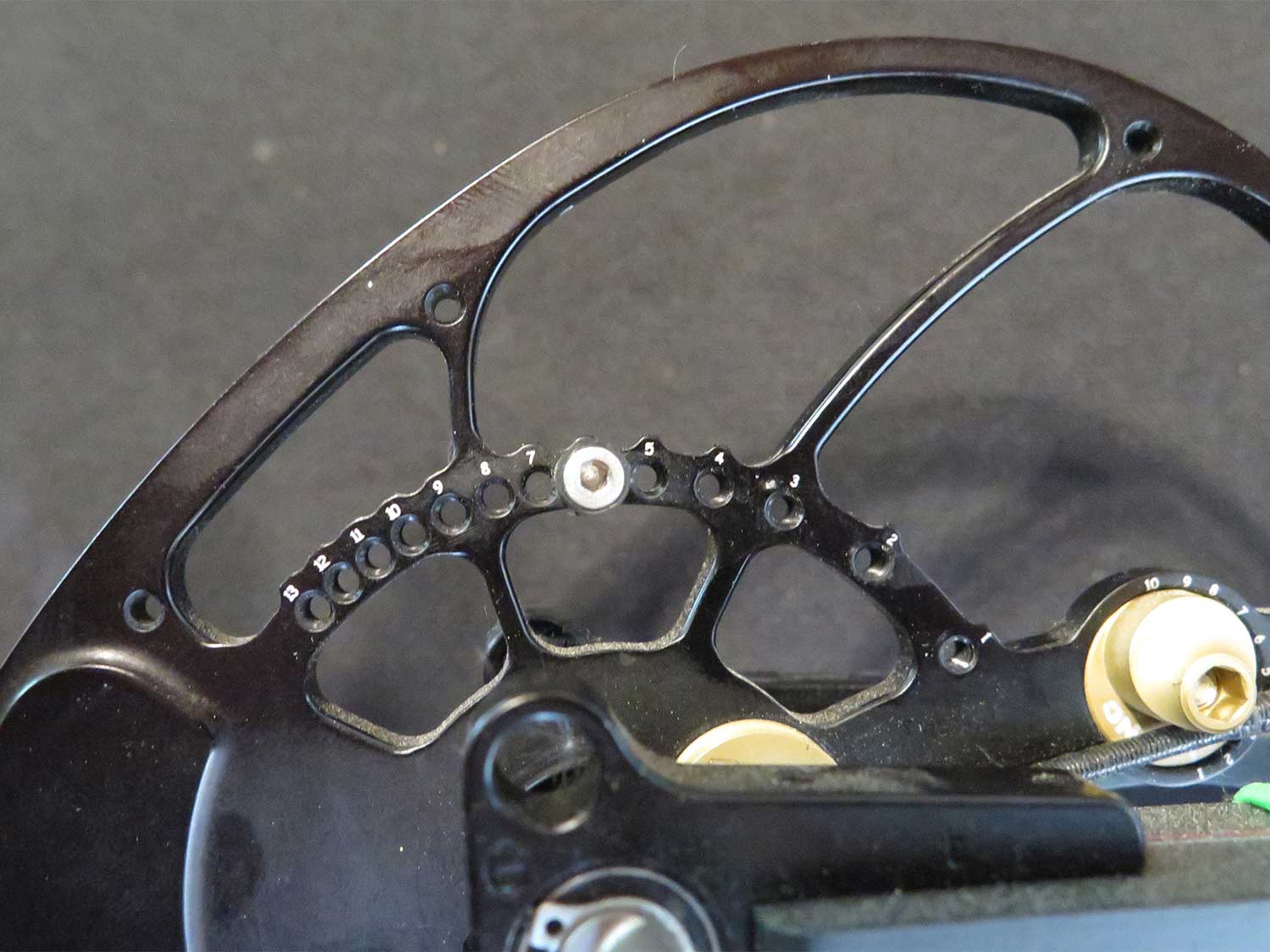
Here again is technology that has been around for a while, but not all companies do it quite the same, and recent refinements have helped. The best modular draw length cam systems allow you to change draw length more or less instantly, without need for a bow press or other hassles. This allows you to experiment and find the absolute best draw length for your shooting style, which is so critical to proper form and ultimate accuracy. Another advantage of a bow with instantly adjustable draw length is that it allows you to experiment with different types of releases. If moving from an index-finger caliper style to a handheld release, for example, you’ll likely benefit from a slightly longer draw. In the past, that meant the hassle of swapping out a standard D-Loop for a really long one, or maybe, plunking down more cash for a whole new cam system. While many major bow companies offer a solid modular draw system I’ve always been partial to Bowtech’s. It’s an easy, streamlined system that eliminates the need to pop out modules or replace cams, with a foolproof, numbered dial-track system that’s hard to mess up.
6. Built-In Torque-Eliminating Systems

One problem with bow tuning is that most all of us shoot a bow differently. A pro shop archery tech can get your bow to shoot a perfect bullet-hole paper tune tear, for example, but when you launch an arrow it might show a strong left tear. The answer is often shifting a bow’s cam to the left or right to compensate, and nothing does that faster or easier than a built-in torque-eliminating system. The Mathews (www.mathewsinc.com) Top Hat system might be the best industry example, and the most revolutionary. The benefit of this system is that you don’t have to mess with the rest, sliding it far to the right or left. It’s a relatively simple operation to flip the Top Hat over and almost instantly, you and your unique form can be shooting bullet holes. Prime (gets rid of torque/cam lean primarily with help from its unique dual, “parallel-cam” and yoke system, while some companies recommend twisting a bow’s cables, and others offer a bushing system to accomplish much the same thing, which amounts to adding shims to one side of your cam axle. This can also work, but requires you to constantly take your bow apart, which even for experienced bow techs can end up requiring a 30- to 45-minute operation. With the Mathews Top Hat system, a good bow tech can make necessary adjustments in 5-10 minutes. And whether you’re paying someone or doing it yourself, time is money. So our hat is off to Mathews for finding a better way.
7. Improved Limb-Locking Systems
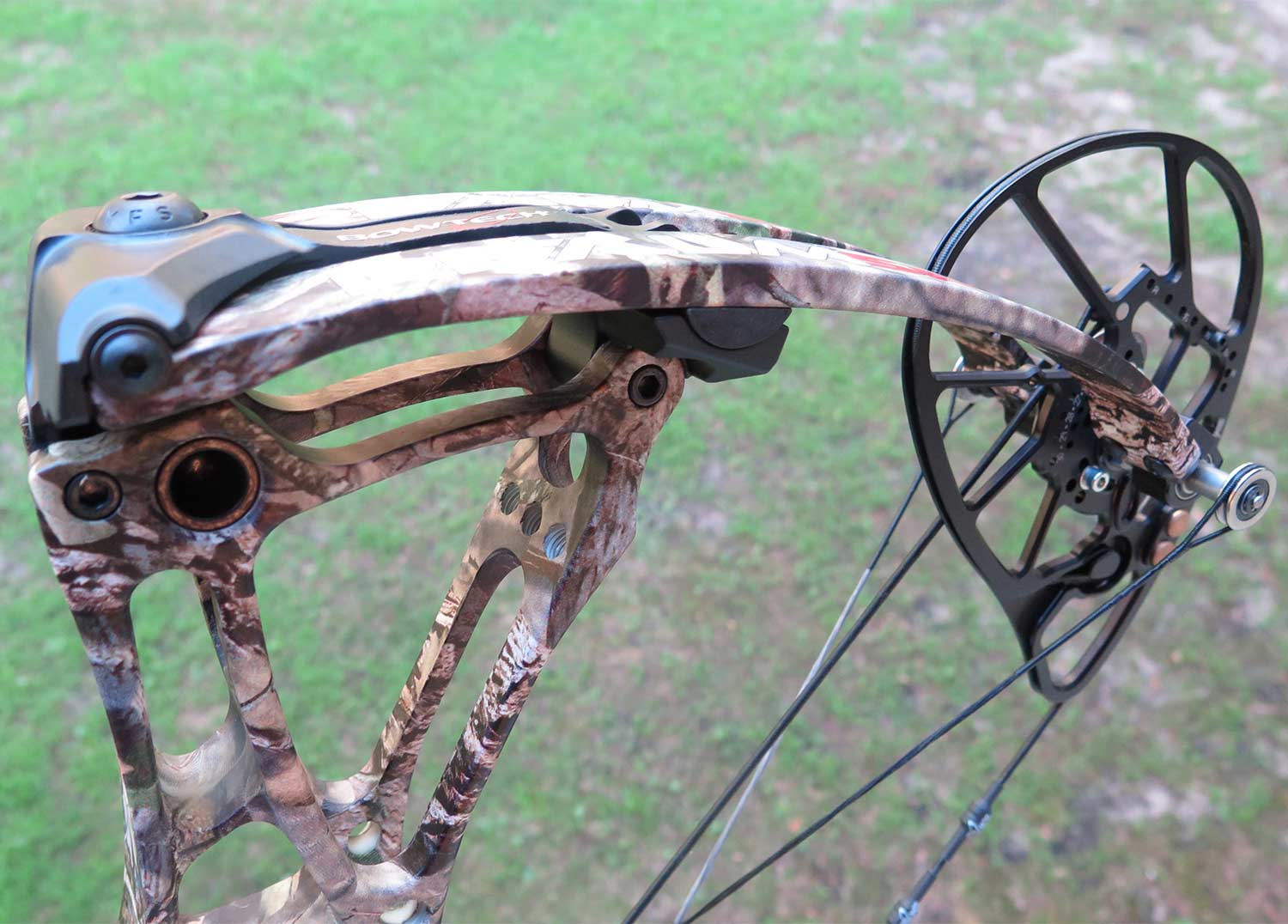
Elite and Hoyt were some of the first bow companies to address locking down limbs once you had reached a desired bow poundage, typically by tightening an additional locking bolt into the riser. This small but significant act helped deliver increased shooting consistency and therefore better accuracy, but recently, limb-locking systems have been even further refined. One of the best is the CP Dual Lock Pocket system (shown) from Bowtech, which appears on several current models including the award-winning Realm SR6. With this system the limbs are permanently locked into place by set screws, eliminating shifting of the limbs in any condition. Next, an oversize set screw locks the pocket to the riser. This eliminates pocket movement, no matter if the bow is adjusted to maximum weight, minimum weight, or anywhere in between. It’s all about promoting consistency, and consistency means increased accuracy.
8. Overall Increased Bow Efficiency

Every year you see bow company prostaffers on camera smiling and shaking their collective heads as they hold up the newest model and talk about how they “Can’t believe Company X could turn out a better, sweeter-shooting new model, but you know what, they did.” It’s almost too easy to dismiss opinions of those paid pros as shameless marketing hype. But the fact of the matter is, bows really do get incrementally better each year. The recent buzzwords have been “increased efficiency,” but what that really means is when you consider a total bow package, you as a shooter are gaining, not losing advantages. The improved bow will likely let you shoot faster at a lighter draw, maybe with a better back wall and increased stability that delivers more-effortless accuracy. The combination of better strings and cables, smarter risers, better limbs and cams makes the entire package perform, well, better. And if you don’t believe me, just talk to archery pro shop technicians who regularly deal with customers who come in with their five- to 10-year-old equipment looking for a tune-up, but then end up test-shooting the latest models. You can guess the rest. They are blown away by the upgrades in speed and accuracy, while pulling less weight. Ring it up!
9. Better Energy-Retaining Cams

We just talked about overall increased bow efficiency, and nothing impacts that equation faster and more noticeably than a bow’s cam system, which really deserves separate mention. The latest and greatest bows are definitely breaking new ground when it comes to energy-retaining cams, and great examples can be found in the new-for-2019 Mathews Vertix, the PSE Evoke 31, and Bowtech SR6, all speedy bows with sneaky smooth draw cycles you wouldn’t guess would deliver extreme speeds. Yet they do. “Maybe the best way to describe it, is to imagine a huge rock at the top of a very steep hill, held in place by a little wedge,” says Garrett Prochaska, head archery technician at Cabin Fever Sporting Goods in Victoria, MN. “You pop that wedge out and the rock is going to go barreling down. The cams on the newest bows are loaded up so tight, they deliver incredible energy at the release, but what’s really exciting is that, unlike several years ago, getting to full draw is now so effortless. To put it another way, today’s newest bows are like having an older-style 80-pound ‘turbo’ bow, in a 70-pound package. You’re getting so much more out of your bow now, and you don’t have to sacrifice comfort to get it.”
10. Custom Bow Finishes/Components

It wasn’t too long ago that getting a custom camouflage paint job on a bow meant relatively few options, long lead times, and substantial increased cost. No more. These days it’s never been easier, or more affordable, to choose from a wide variety of popular camo patterns, and myriad string/cable/bow accent color options. That’s appealing to many bowhunters and it should be; nobody wants to plunk down somewhere in the neighborhood of $2,000 for a new bow and accessories and have it look… generic. Just a few examples include Mathews that lets you choose a black riser paired with a wide variety of camo limbs for no extra charge, and you can add a wide variety of colored strings and cables for a minimal $30 upgrade. And Ben Pearson, a mid-priced bow company, has a neat “build your bow” option found at that allows you to click and choose from a wide variety of limb, riser and string and cable colors—even options for the string and cable serving!—while you watch your new bow come to life on screen. A new age of customization is here.
